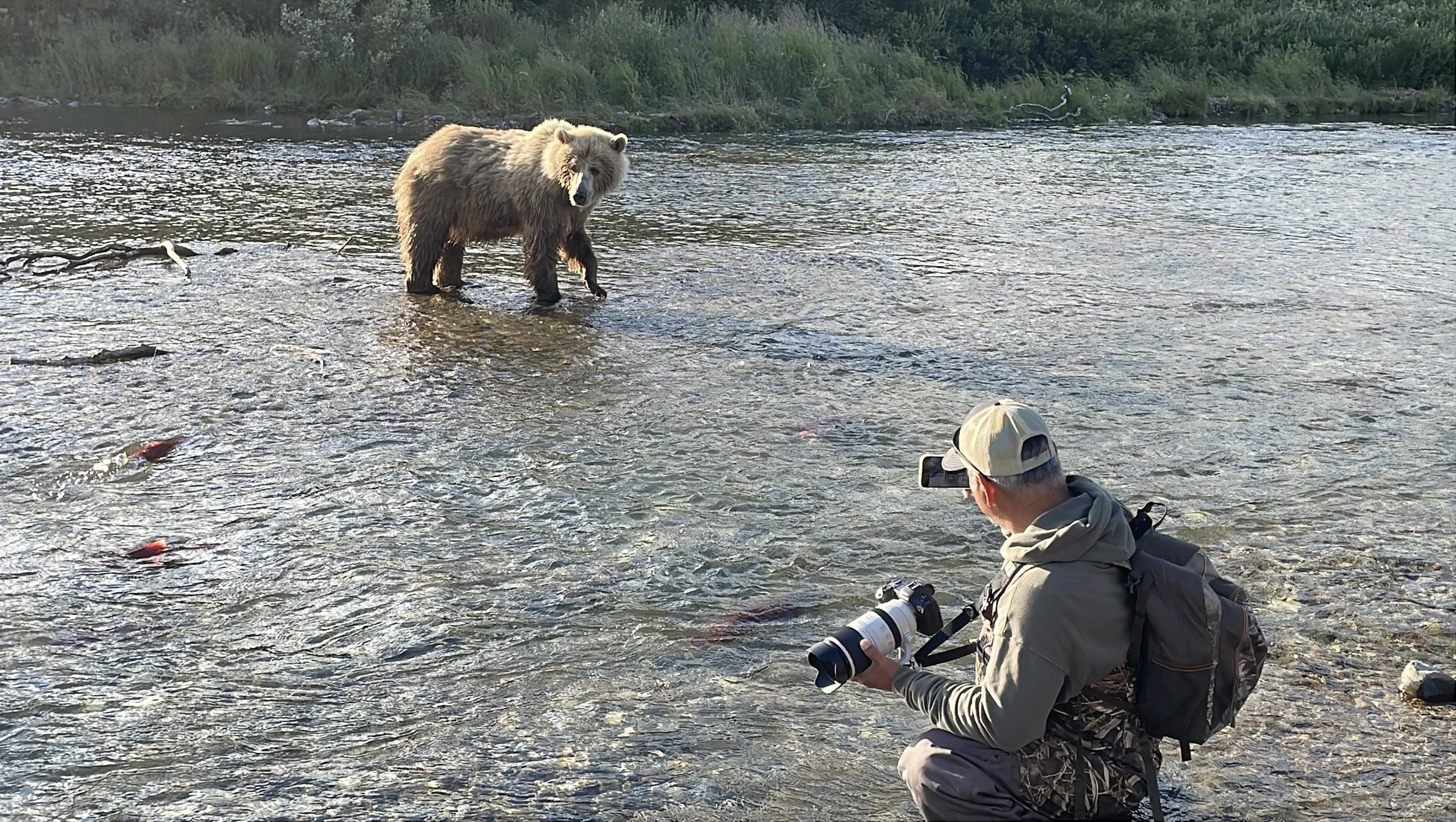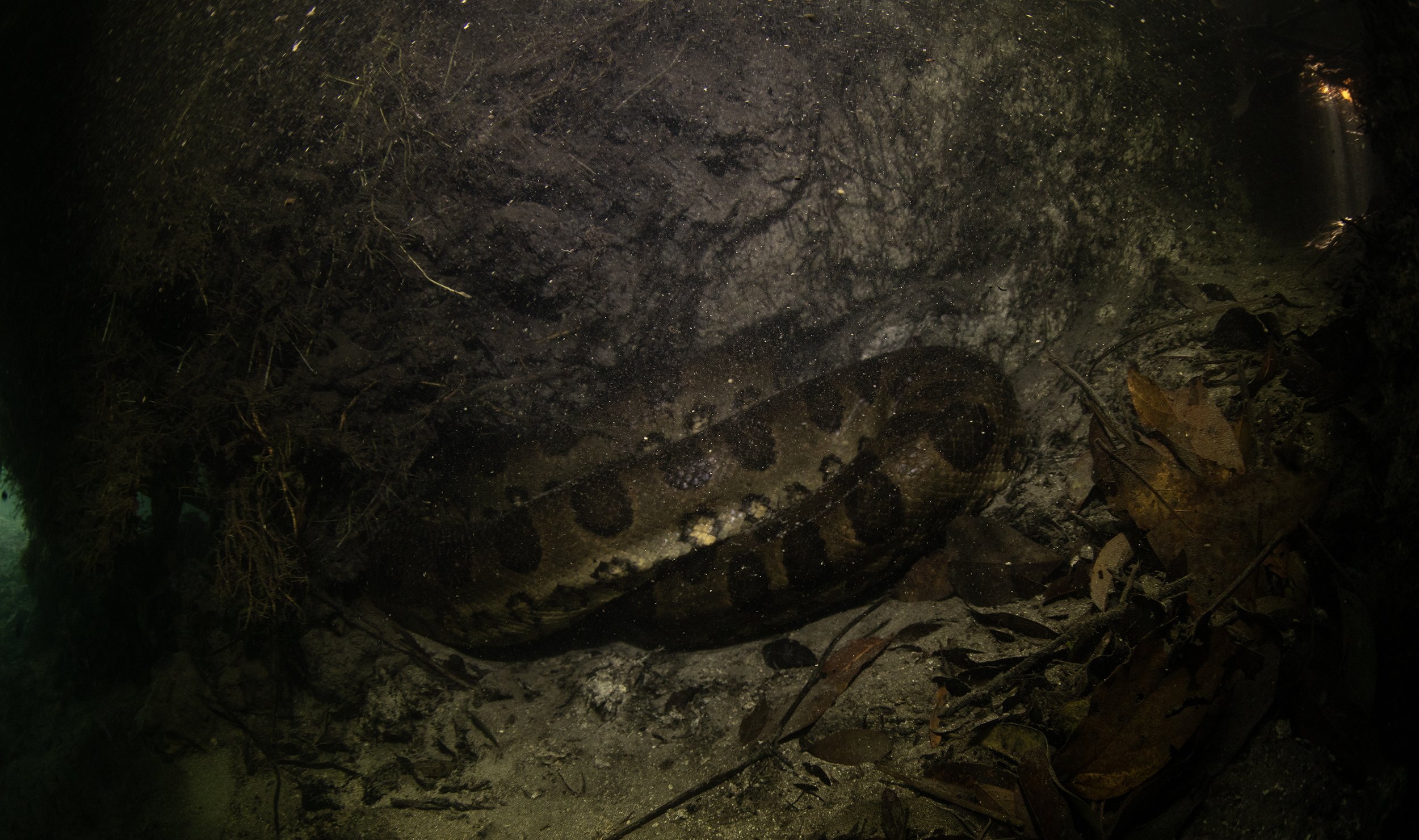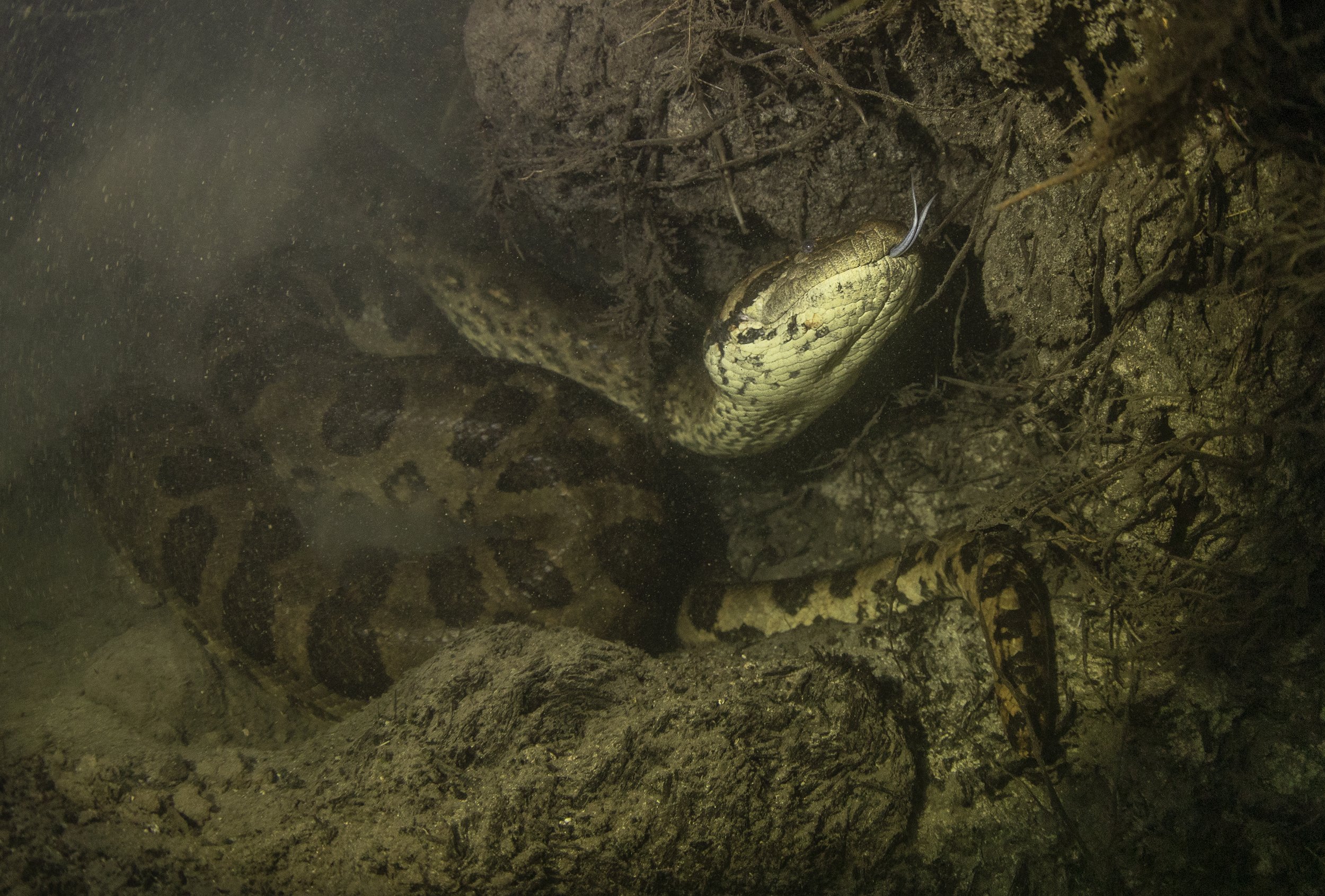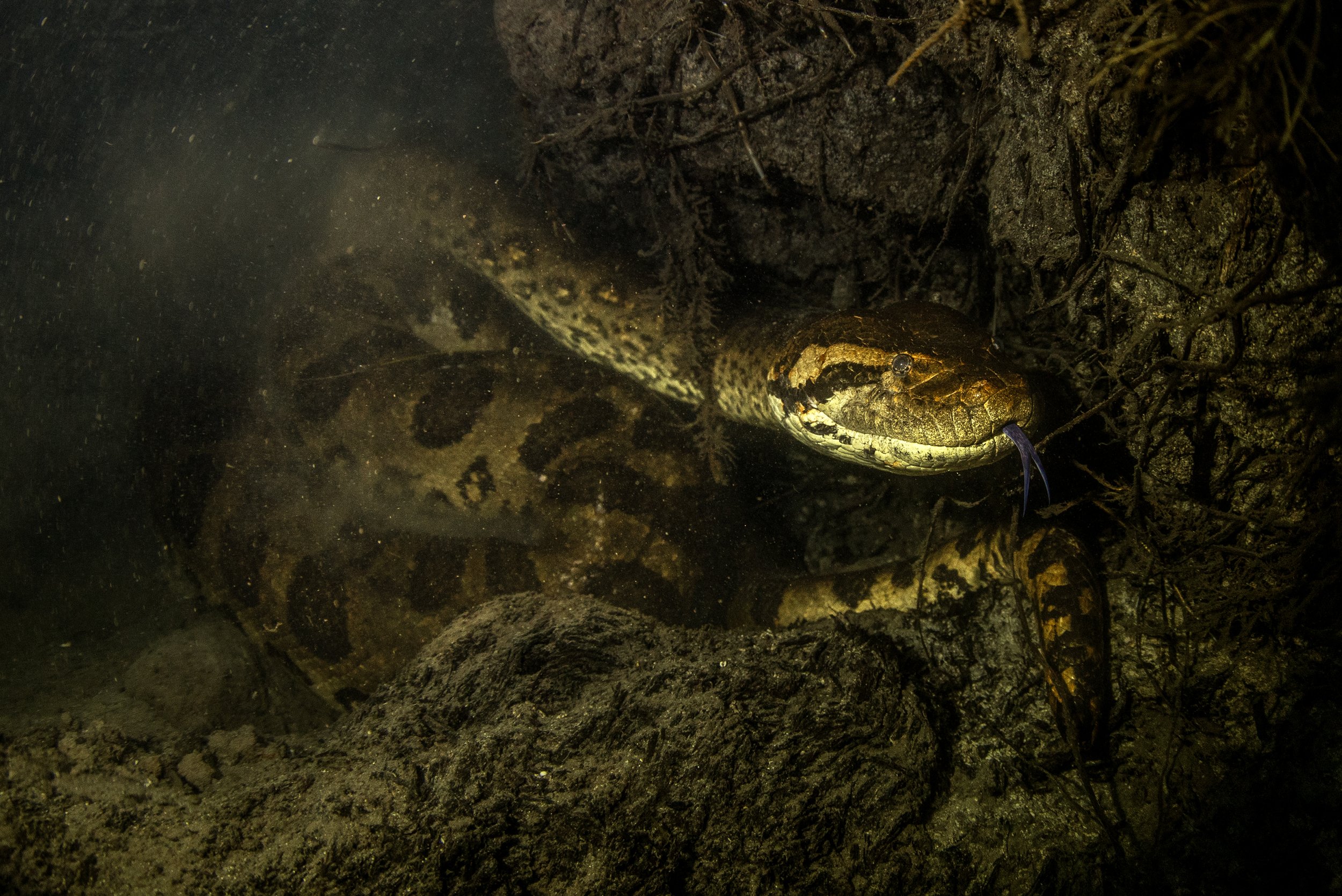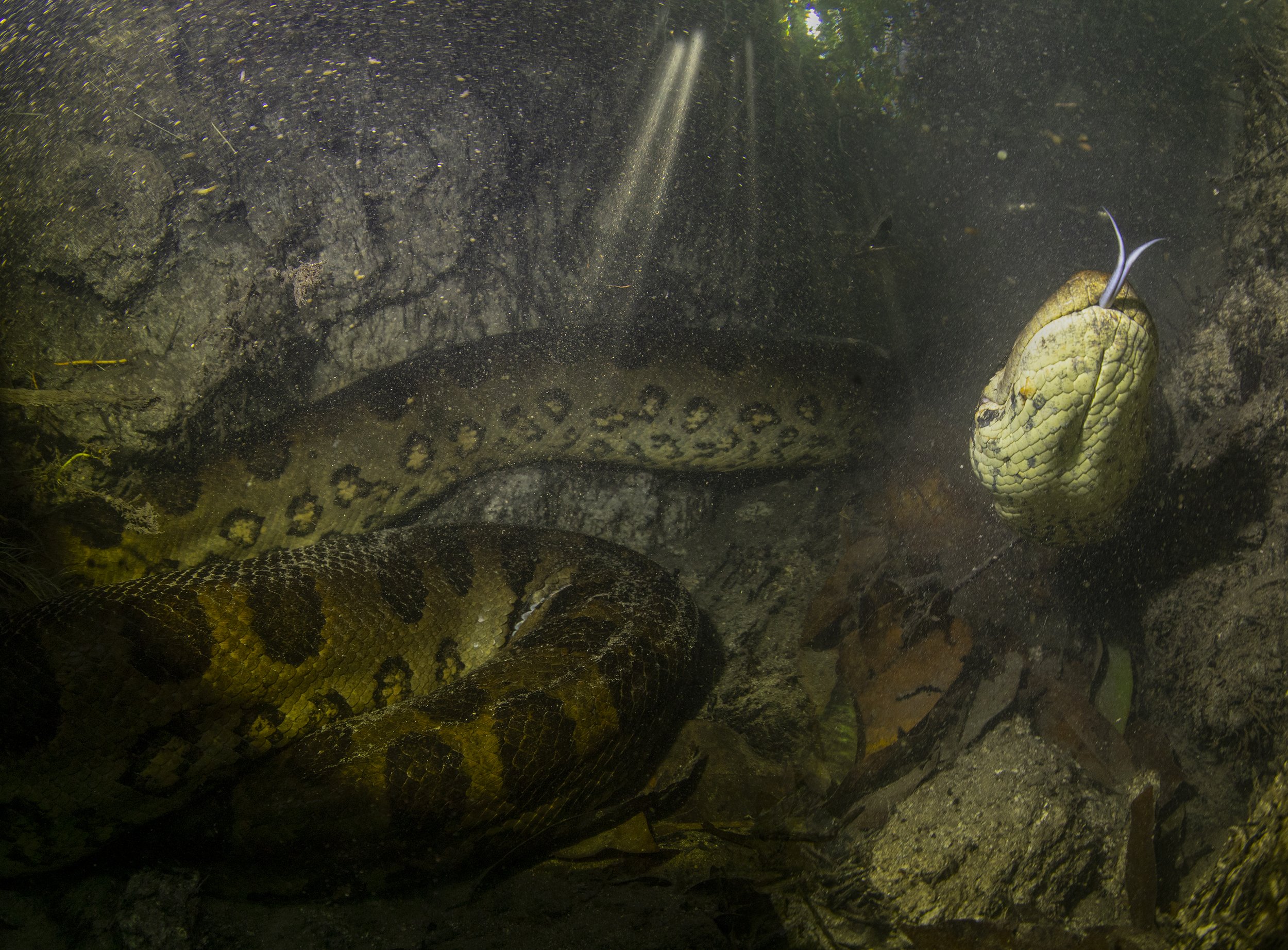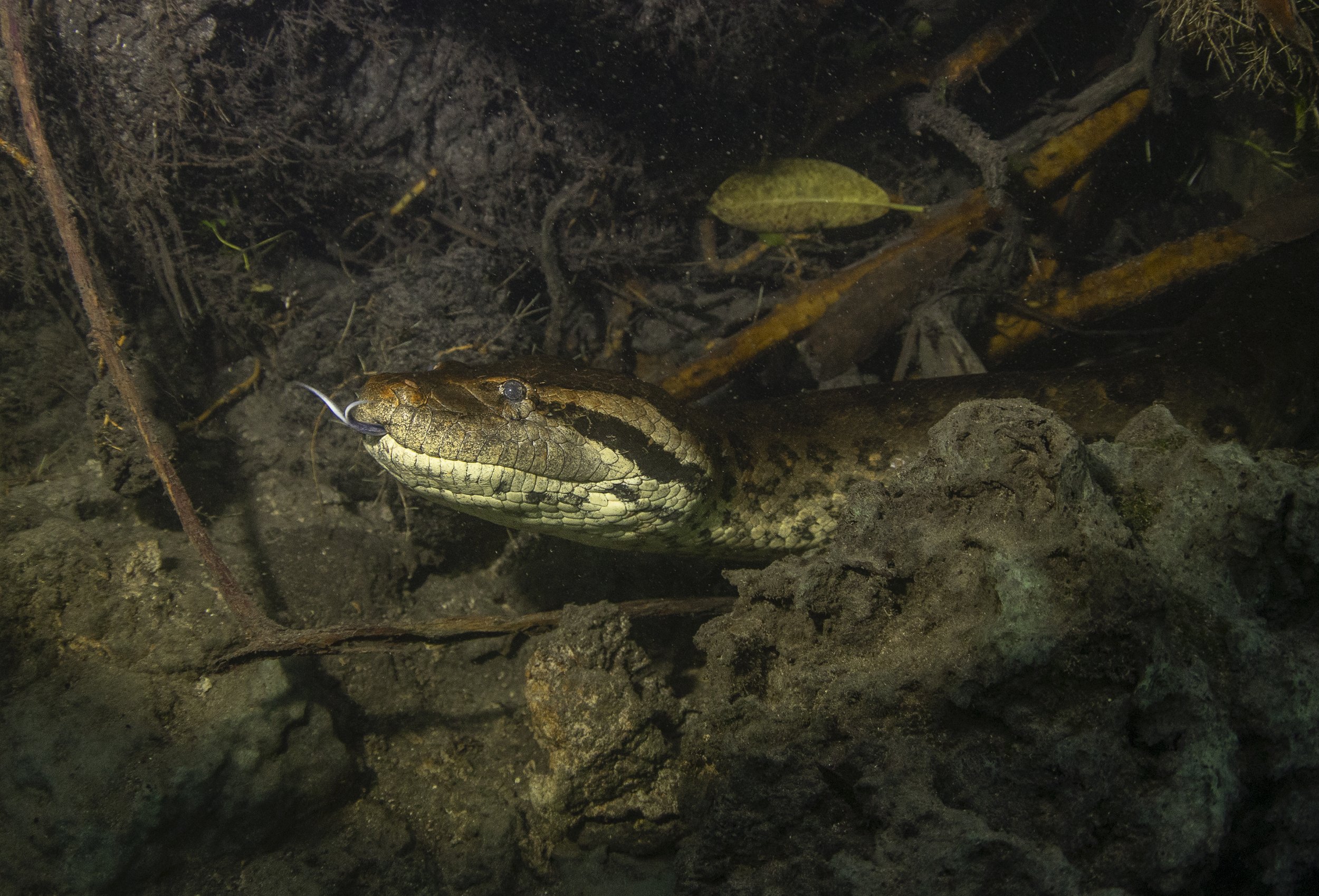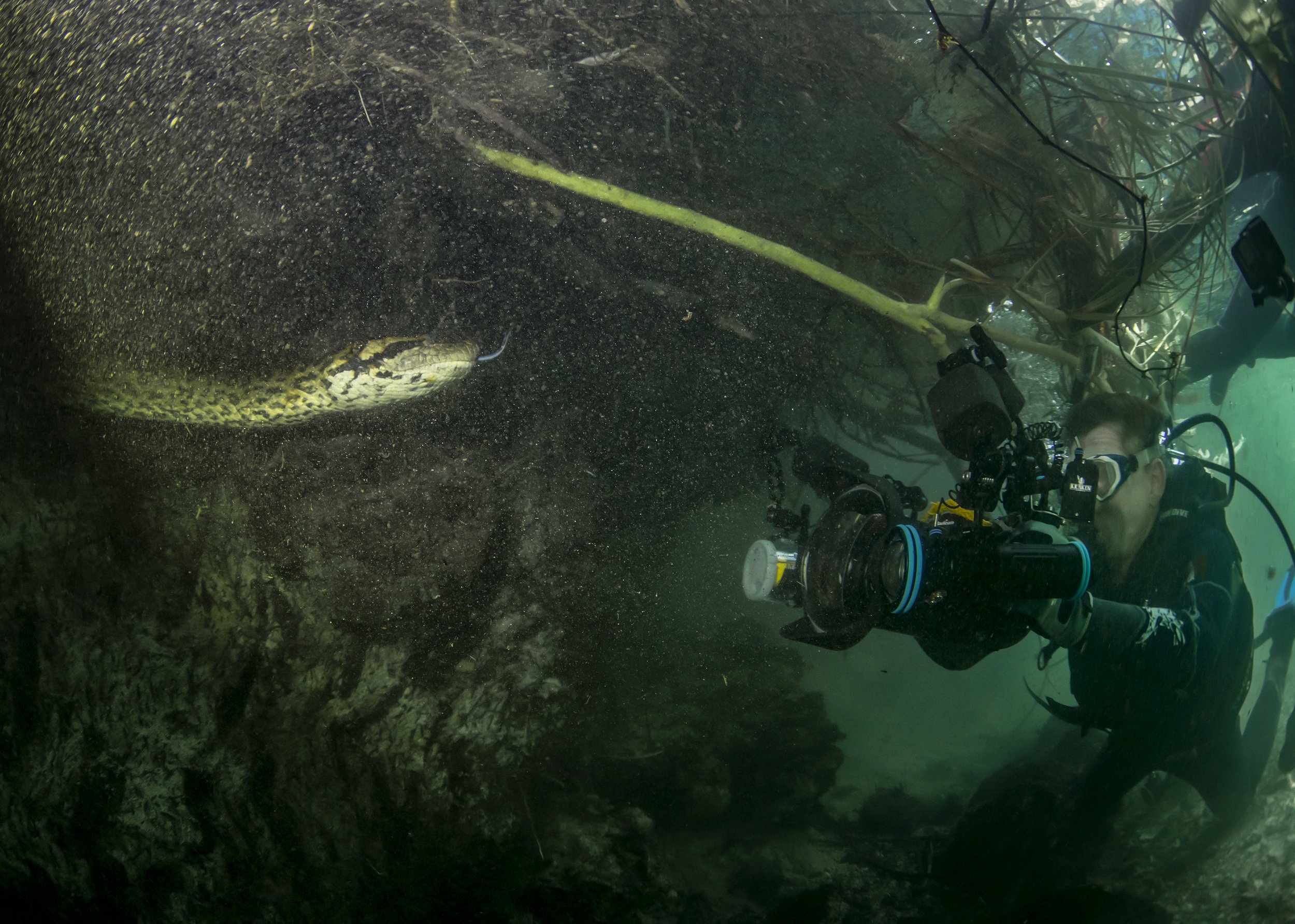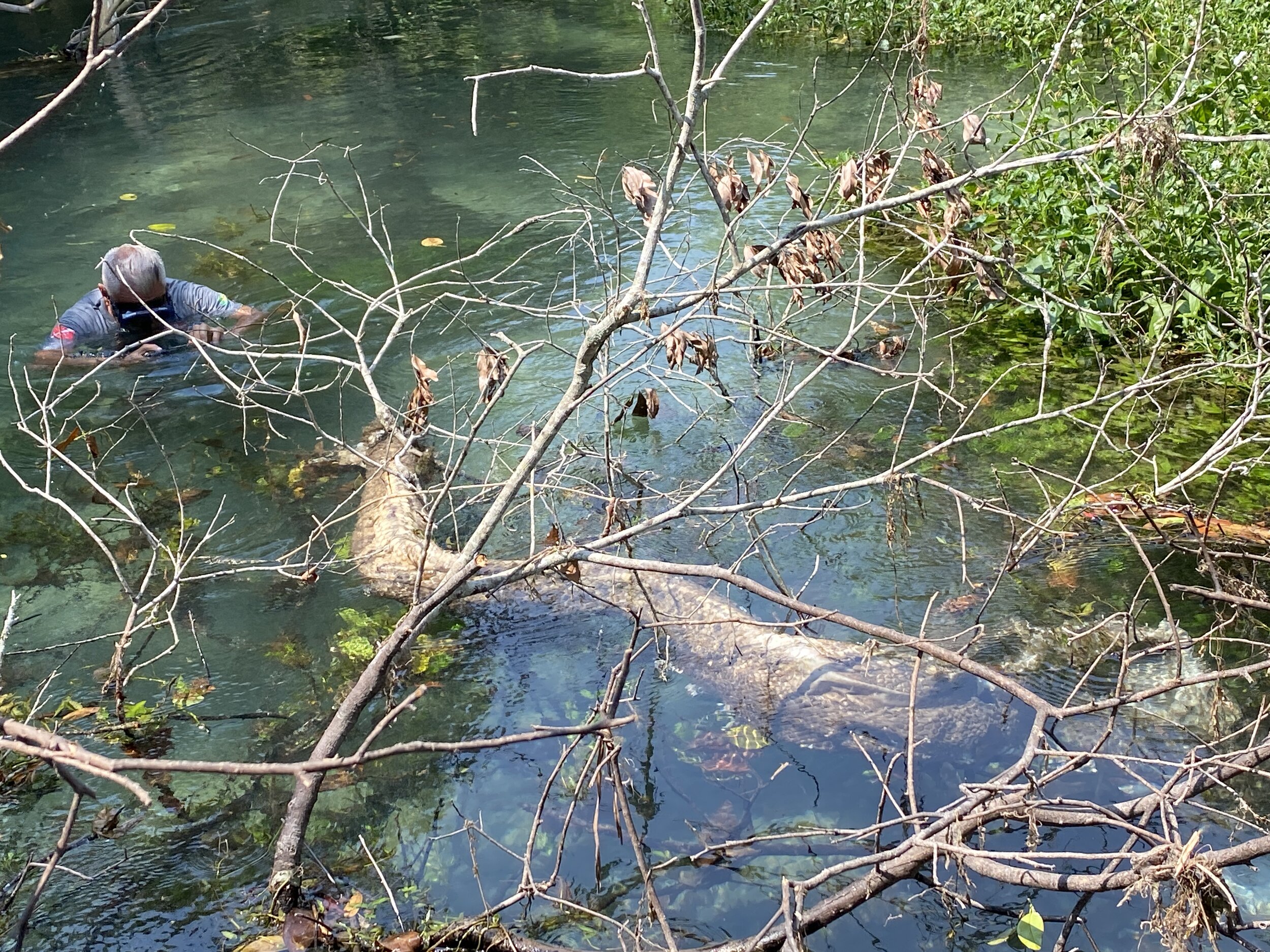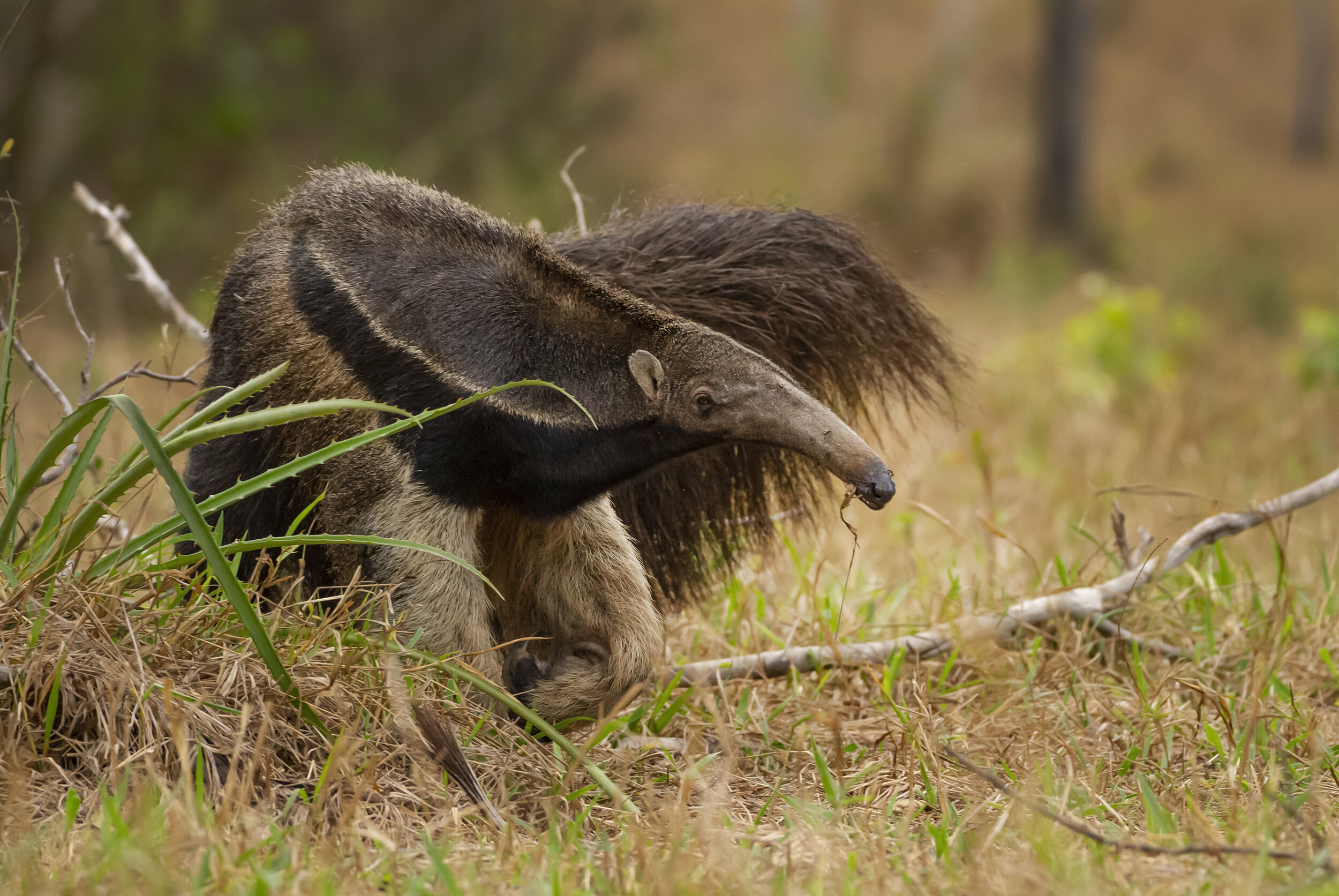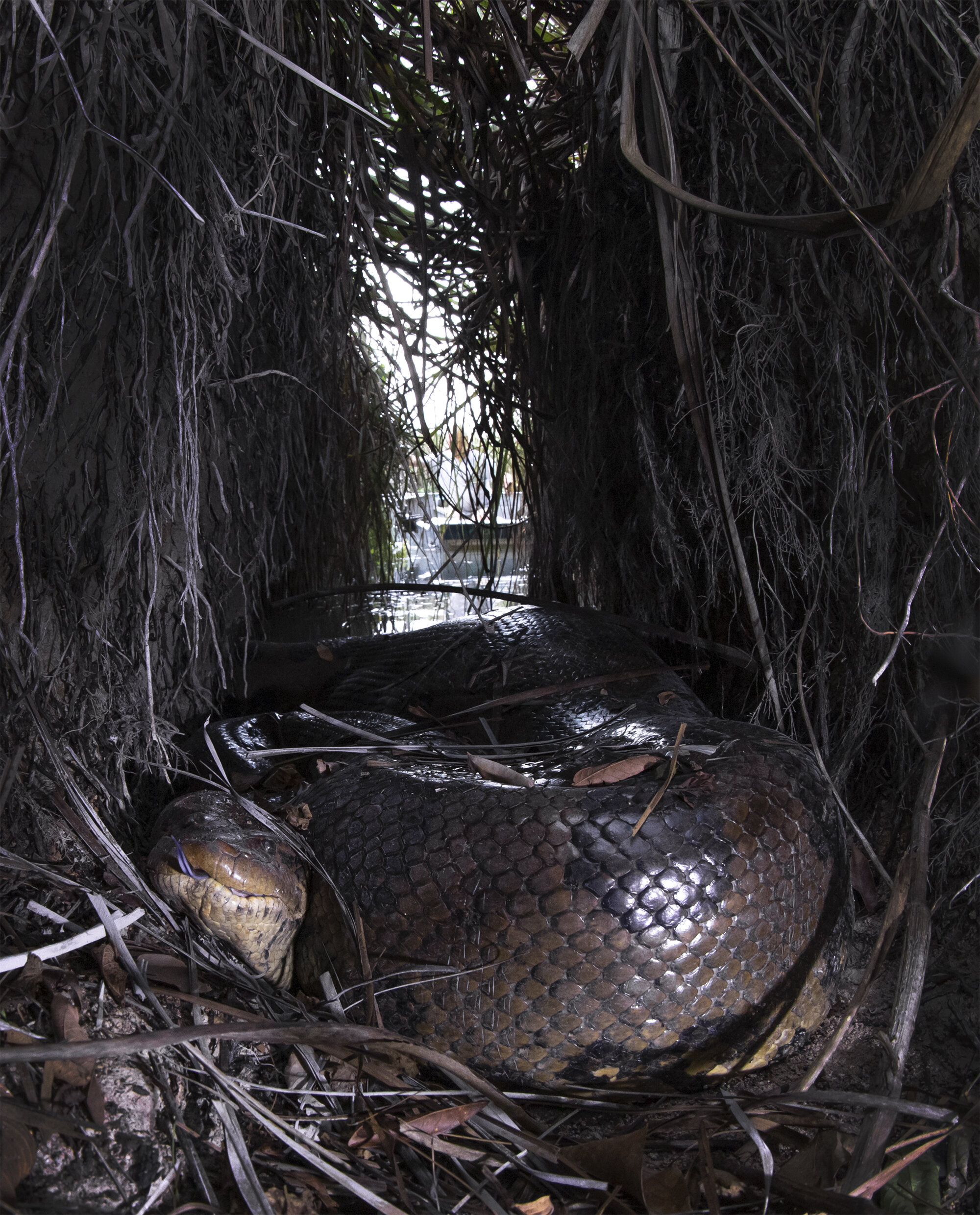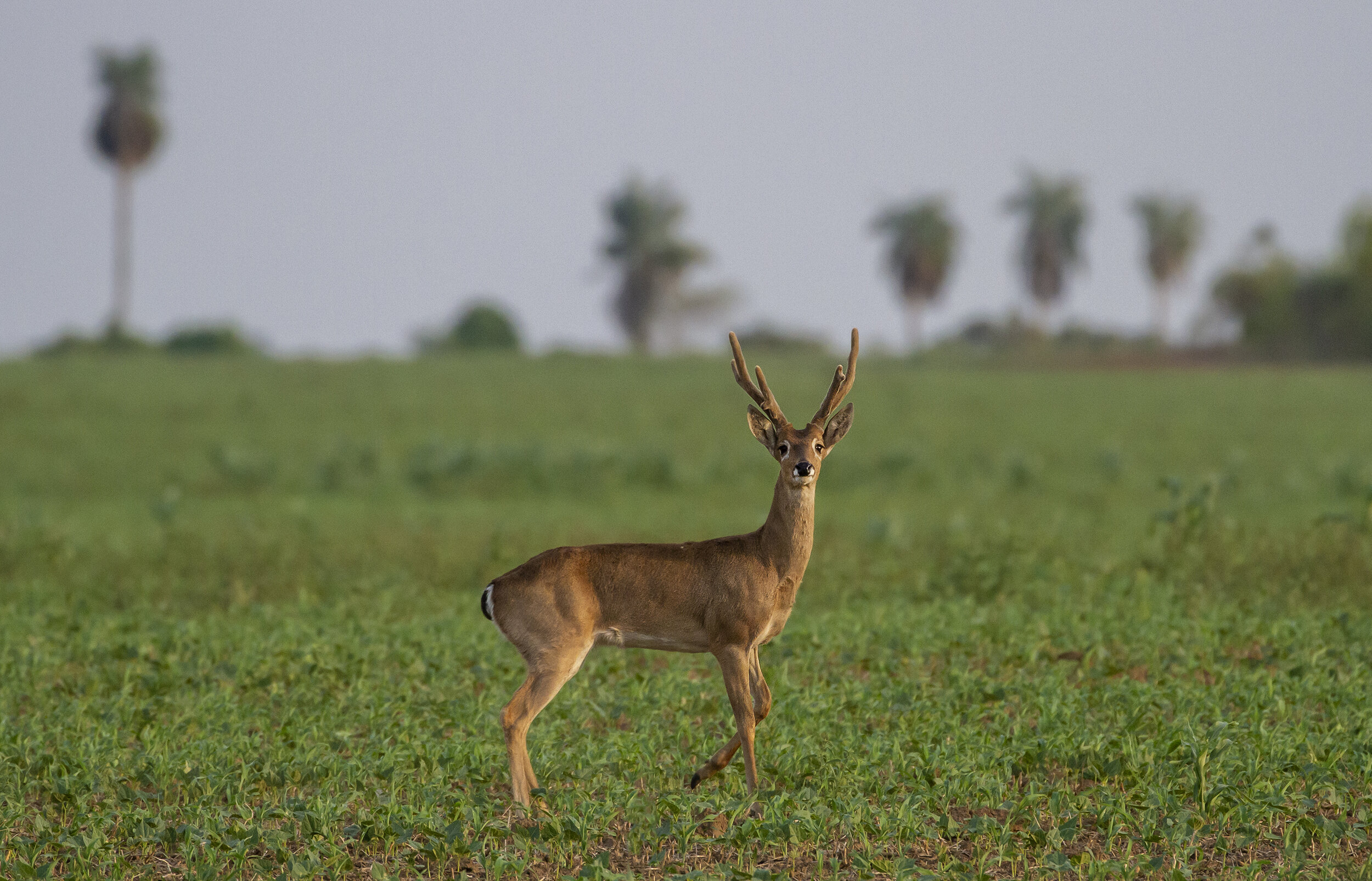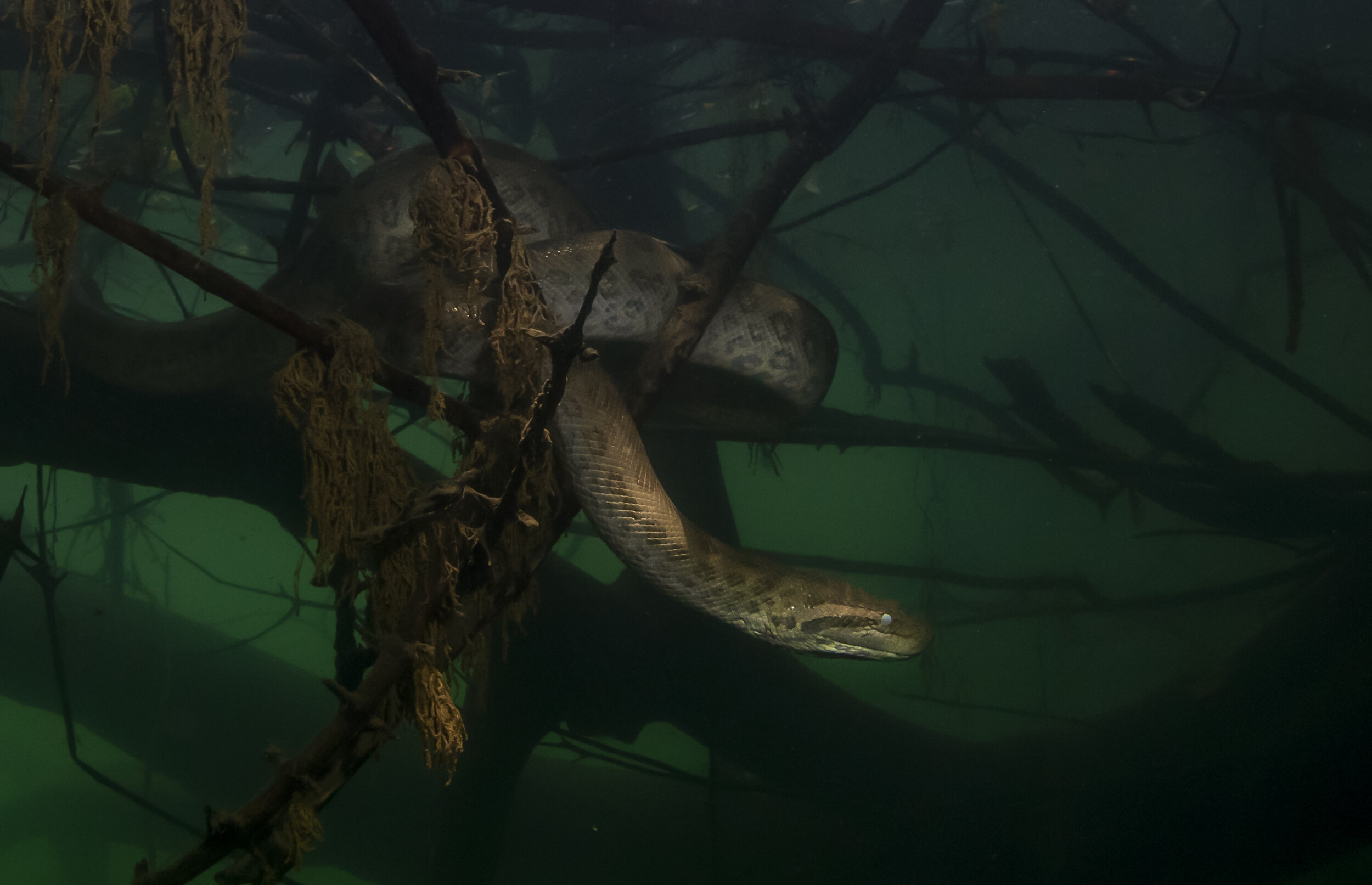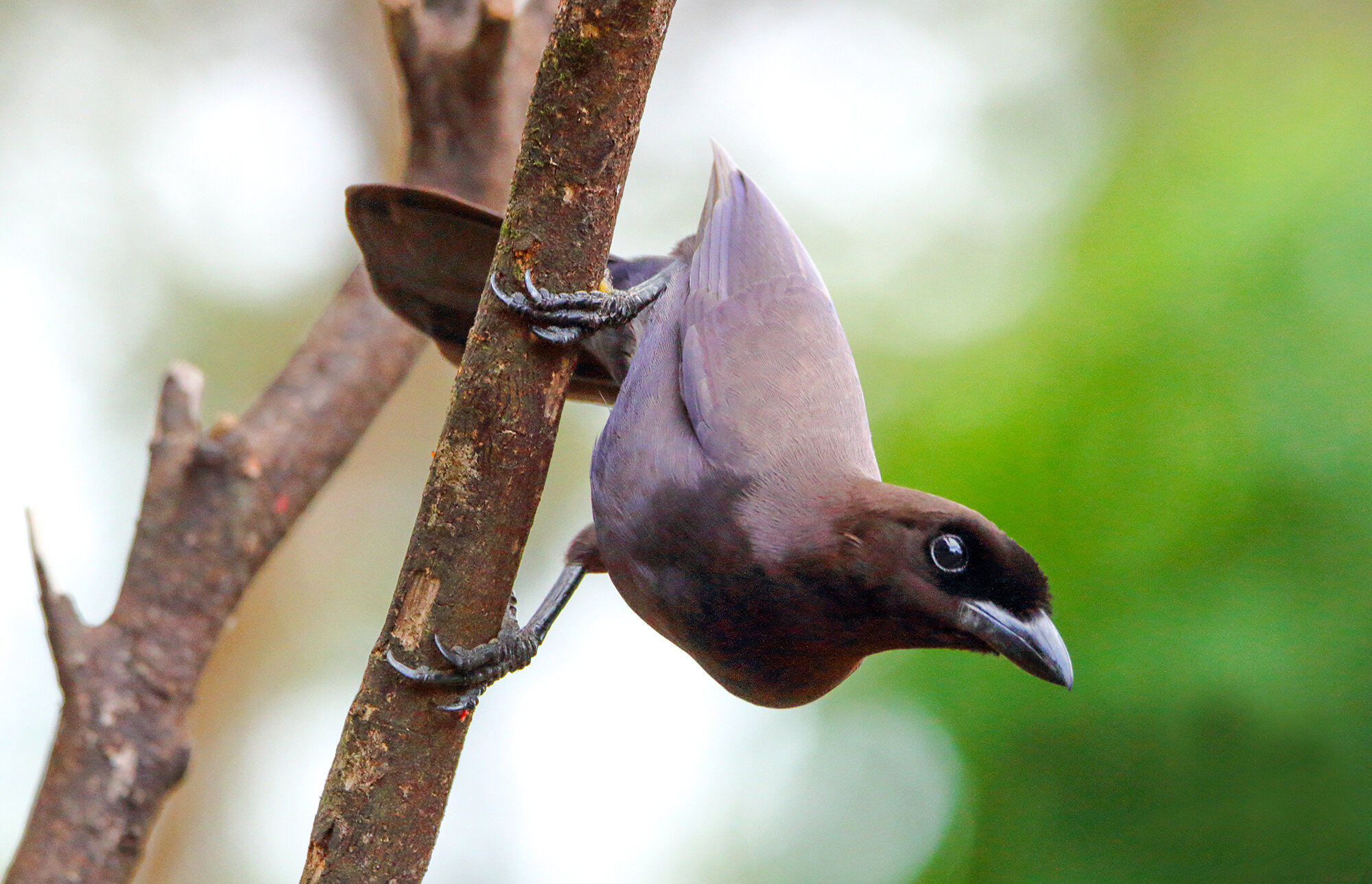Image by Daniel De Granville
There are moments in life that stick with you. For me, it was the first time I saw an image of a diver next to a massive anaconda by my friend Daniel De Granville. It is such a great photo—its power, the sheer size of the snake, and the surreal contrast of this ancient predator alongside a human. It sparked something in me. From that moment on, I knew I had to experience this dive for myself.
I had to capture an image like that!
This September was my seventh expedition to photograph these iconic snakes in Brazil. Over the years, I’ve captured many images of anacondas that I’m incredibly proud of—photos I love and hold dear.
But that shot by Daniel—of a diver next to a massive anaconda—was different. It was the photo I had been visualizing in my mind’s eye for so long. I couldn’t let that photo go.
On September 6, our final day of the expedition… the stars finally aligned.
Contrary to popular belief, these snakes are not aggressive. In fact, they’re incredibly shy and prefer to stay hidden. Anacondas often burrow in holes they have made along the riverbanks, making them difficult to spot, let alone photograph.
The snakes tend to tuck themselves in tight, so often the only images you capture are of their faces. Still cool, but not an image that gets the imagination going.
I quickly learned that capturing my dream image would take more than just persistence—it would take some luck, too. Because keeping a snake out in the open long enough to capture a shot is difficult, all they want to do is hide.
But then it happened.
We were in the Formoso River, far out into the Brazilian wetlands. After a long day of searching, We found a massive anaconda, calm and relaxed, coiled up underneath the base of a tree. Half of its body was hidden inside its hole, with the other half exposed for all of us to see. Its face was tucked underneath the overhanging tree roots, a perfect hiding spot in the river.
We spent a lot of time with this snake, photographing her from different angles. She was so calm and mellow, allowing us to observe her without any signs of stress.
After capturing various shots, I knew it was time to go for my dream shot. I asked my friend David to position himself near the snake, hoping she would stay relaxed with him so close.
I had been telling my friends who joined me on the trip about my dream shot. So when the moment arrived, they knew exactly what I was hoping to capture.
David leaned in close to the snake, and I patiently waited for the moment when the snake would reveal her face. My camera was ready, my heart racing, as I snapped shot after shot of David and the snake. Each time she peeked out from under the roots, I took another photo, hoping that one of them would turn out right.
I was on fire... my hands gripping my camera tight, maybe too tight. I felt a wave of panic, knowing this was my chance to finally get that shot. I was nervous that the snake would tuck herself tighter in her hole and the moment would be over. But the anaconda remained calm, and I managed to capture the shot I had been chasing for so long.
This was the culmination of years of patience, persistence, and a lot of luck, all coming together at the perfect time. The photo wasn’t exactly like the image I had seen all those years ago… but it was mine. I got my shot. More than that, I had a moment that I shared with my friends that would stay with me for the rest of my life.
My version of the moment where man and the wild met.

